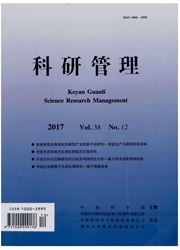

 中文摘要:
中文摘要:
基于企业长期核心能力视角,从研发实体层面研究组织创新模式选择的影响因素及机理。通过对中国东阿阿胶和日本山九株式会社的双案例研究,发现组织核心能力包括能力支点和能力外围两个层次,这使得组织内部往往同时存在多种创新模式;而组织对不同创新模式的选择正是其核心能力间动态转化的外围表现:封闭式创新、开放式创新分别在能力支点、能力外围表现出更强的适应性,更进一步,开放式创新的深度创新、广度创新模式分别适应于较高进入门槛的“专有能力外围”和低进入门槛的“群聚能力外围”。相比于现有的侧重于组织战略和决策分析的创新理论,该基于核心能力层次的创新框架能从较微观层面打开创新模式选择“黑箱”,更深入的解释组织的创新行为。
 英文摘要:
英文摘要:
From the long - term core competence perspective of organizations, this paper studies the impact factors and mecha- nism for organizational innovation model selection. Through two case studies of Dong - E E - Jiao Company in China and SANKYU in Japan, two - level core competences are identified which are Capability Pivot (CPT) and Capability Perimeter (CPR). As multiple innovation models commonly exist within single organization, the selection of innovation model shows the transformation of core competences. Close innovation and open innovation associate with CPT and CPR respectively. Innovation depth and innovation breadth are suitable to high -threshold exclusive competence periphery and low -threshold cluster compe- tence periphery respectively. In comparison to currently innovation theory focusing on organizational strategy and decision making analysis, this core competence level of analysis framework opens the black box for innovation model selection in a micro level, therefore it gives underline explanation of organizational innovation behaviors.
 同期刊论文项目
同期刊论文项目
 同项目期刊论文
同项目期刊论文
 期刊信息
期刊信息
